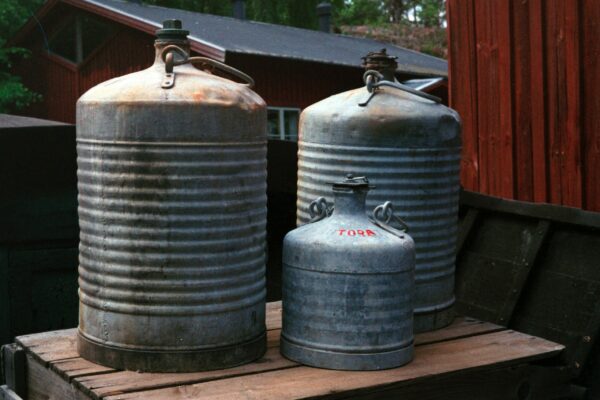What do you currently get for a kilo of tin?

Depending on the type, quantity sold and degree of purity, the price per kilo for tin is between 6 and 15 euros. In our table you will find the current tin prices in euros per kilo.
Current prices for tin scrap
| Art | Average price per kilo in euros |
|---|---|
| dish tin | 14.00–16.00 euros/kg* |
| Tin min. 99% pure | 18.48–19.68 euros/kg* |
| Tin scrap (solder) | 13.00 euros/kg* |
* Prices depend on quantity and location. There is a possibility that larger quantities can potentially achieve higher prices.
How much money do I get for old tin items?
The price of tin depends on the purity and type of tin scrap.
It's worth comparing the tin prices from different dealers. The margins that a tin buyer charges for cleaning and processing the tin vary greatly.
You may be able to sell particularly beautiful art objects made of tin or tin toys to a collector on Ebay for higher prices than the scrap trade pays for them.
Tin prices according to purity per kilo
| tin content | Price per kilo |
|---|---|
| Tin from 99% | approx. 20 EUR / kg |
| Tin 90% to 98% | approx. 15 EUR / kg |
| Tin 80% to 89% | approx. 12 EUR / kg |
| Tin 70% to 79% | approx. 10 EUR / kg |
| Tin 60% to 69% | approx. 8 to 9 EUR / kg |
| Tin 50% to 59% | approx. 6 to 7 EUR / kg |
Overview of the different types of tin
dish tin
What many people don't know: pure tin is never used to make pewter tableware, as it would be far too soft for use. That's why tin dishes always contain a small proportion of other metals such as copper, antimony or lead.
Even if the tinware is stamped “pure tin”, it is an alloy. Previously, dishes that consisted of at least 95 percent tin could be called “pure tin”. But pewter items don't always have a stamp. If you are unsure whether it is tin, you can use our Testing do so further down on this page.
If your dishes are made of at least 90 percent pure tin, you can get a very good price for tin when you sell them.
There is a constant demand for high-purity, recycled tin, especially in the electronics industry.
Tin soldiers
The popular children's toy from earlier days is not made of pure tin, as the name suggests. The figures were cast from lead with only 30 percent tin added.
Because lead is extremely toxic, no child should play with it. But you can sell the figures to collectors at a good price. Tin toy lovers pay a better price for well-preserved figures than scrap dealers.
Industrial tin, 99 percent tin
Tin scrap with a purity of 99 percent is further processed in industry into various alloys. It is far too soft to make a product directly from it.
Industrial tin comes primarily from surplus and remaining stocks from the metal industry.
Tin in this category must be free of adhesions, liquids and dirt and have a recognizable purity statement.
Solder, 40 percent tin
Tin is used in an alloy to solder water pipes and cables zinc or copper used. When making circuit boards, the solder even consists of an alloy with silver.
Solder that is no longer needed still fetches quite good prices on the scrap market - as long as it does not have any adhesion of foreign substances or grease.
Who buys things made of tin?
Tin can be sold to a precious metal buyer for a price of between 10 and 15 euros per kilo. There are also dealers who specialize in tin.
If it's art, tableware or toys made of tin, you might get a bargain price on Ebay. Many antique dealers are also happy to accept beautiful pieces made of pewter.
How do I recognize real tin?
In the past, many objects such as dishes, cutlery, toys and decorations were made from tin.
These things often lie around in basements or attics for a long time until they come to light as part of a household clearance.
But not everything that looks like tin is actually tin. In the past, tableware was also made of lead or zinc by our ignorant ancestors. It was simply cheaper to make a plate out of lead rather than out of expensive tin. Many laypeople therefore confuse tin with zinc or lead.
Here's how you can identify tin:
Tin: The heavy metal tin has a silver hue and appears much duller than lead. It bends easily without breaking. When bent, tin makes a crunching sound. Scrap dealers humorously call this sound “tin scream.”
Lead: You can identify the dark gray lead with special test pens from the hardware store or specialist retailer. To do this, hold the pen to the object to be tested. If the pen changes color, it is lead.
Zinc: The light gray zinc has the same color as rain gutters. It is lighter than tin. The easiest way to detect zinc is with the hammer test. If you hit it with the hammer you will only make a rattling sound, not a dent. Tin, on the other hand, will dent if you hit it with a hammer.